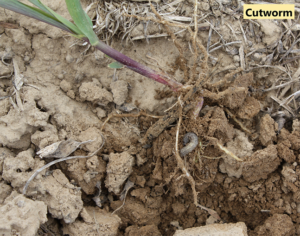Management options
Insecticide (Trade Names) for CUTWORMS Lb Active Ingredient per Acre Amount Formulation per Acre Performance Rating
bifenthrin (Brigade 2E, Discipline 2E, Fanfare 2E) 0.033 - 0.10 2.1 - 6.4 oz 8
carbaryl (Sevin XLR Plus 4) 2 64 oz 5
esfenvalerate (Asana XL 0.66E) 0.03 - 0.05 5.8 - 9.6 oz 8
permethrin (Pounce 3.2E) 0.1 - 0.2 4 - 8 oz 8
β-cyfluthrin (Baythroid XL 1) 0.006 - 0.0125 0.8 - 1.6 oz 8
γ-cyhalothrin (Declare 1.25) 0.008 - 0.0125 0.77 - 1.28 oz 8
λ-cyhalothrin (Warrior II) 0.016 - 0.026 0.96 - 1.6 oz 8
Z-cypermethrin (Mustang Maxx 0.8E) 0.008 - 0.0175 1.28 - 2.8 oz 8
- Burndown with herbicides well in advance of planting (3-4 weeks) can reduce the risks of infestation.
- Certain Bt corn technologies provide some protection against cutworms.

